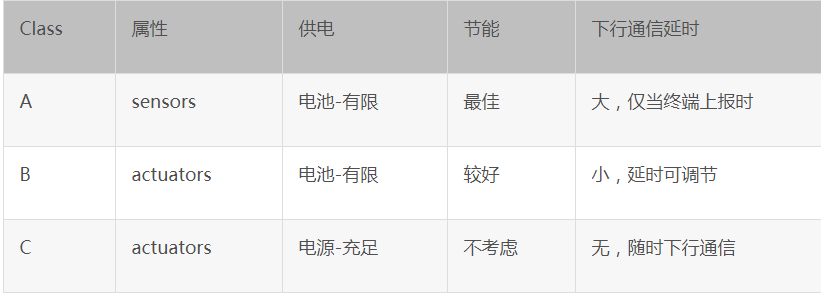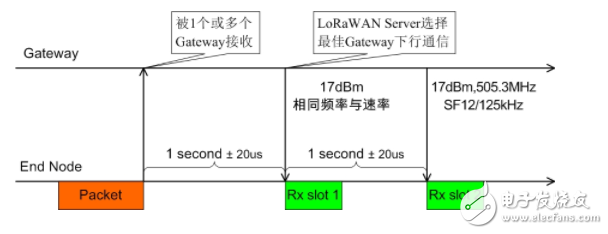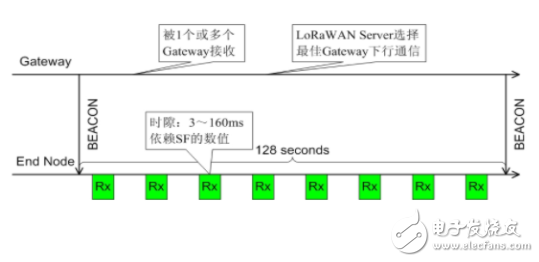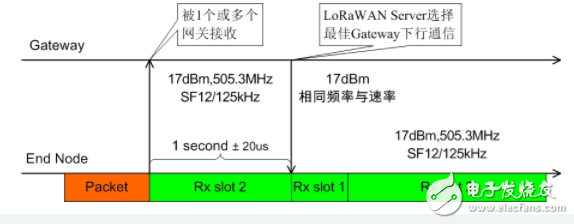
本文将介绍sensors、actuators、actuators三类终端的特点。sensors是LoRaWAN的主流,actuators用于校准自身的时钟。actuators是为充足电能的actuator设计的。
不同的应用场景需要不同的技术条件,LoRaWAN一开始就将End Nodes分成3类,它们在电池寿命和唤醒延时上各有千秋。这是明智的,可以根据应用选择最佳的类别。
1 三类终端的特点

Class A是LoRaWAN的主流,它的通信时序如下图所示。End Node根据自己的需要上传数据包,这可以被1个或多个Gateway接收;1秒钟后,信号最强的Gateway按上行相同的频率和速率,下发数据包;如果End Node在Rx slot1接收成功,它不再打开Rx slot2窗口,否则它将按505.3MHz SF12/125kHz(中国地区)条件打开Rx slot2窗口。
Class A节能效果最好,因为仅当发送和2个接收窗口外,其他时间都是休眠。当然,LoRaWAN Server仅当该End Node上行通信后,才能下行通信。

Class B的End Node每128秒接收Gateway广播的Beacon,用于校准自身的时钟。在2个Beacon之间,End Node会开启一些接收窗口(ping slot),如果在窗口期接收到Gateway的preamble,那么它将接收完整的下午数据包。
End Node根据自身电量和应用的需要,选择ping slot的数量;以达到节能和下午通信的折中。

Class C是为充足电能的actuator设计的,如:智能插座、远程电气控制开关等。除了发送数据包和Rx slot 1外,它都在Rx slot 2期间接收,这可以保证Server随时下行通信。

欢迎分享,转载请注明来源:内存溢出

 微信扫一扫
微信扫一扫
 支付宝扫一扫
支付宝扫一扫
评论列表(0条)